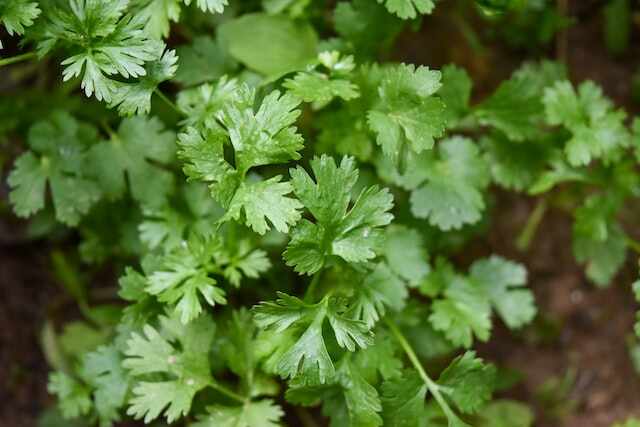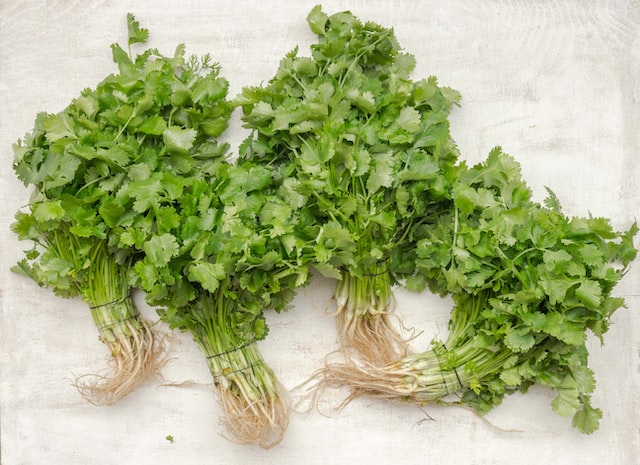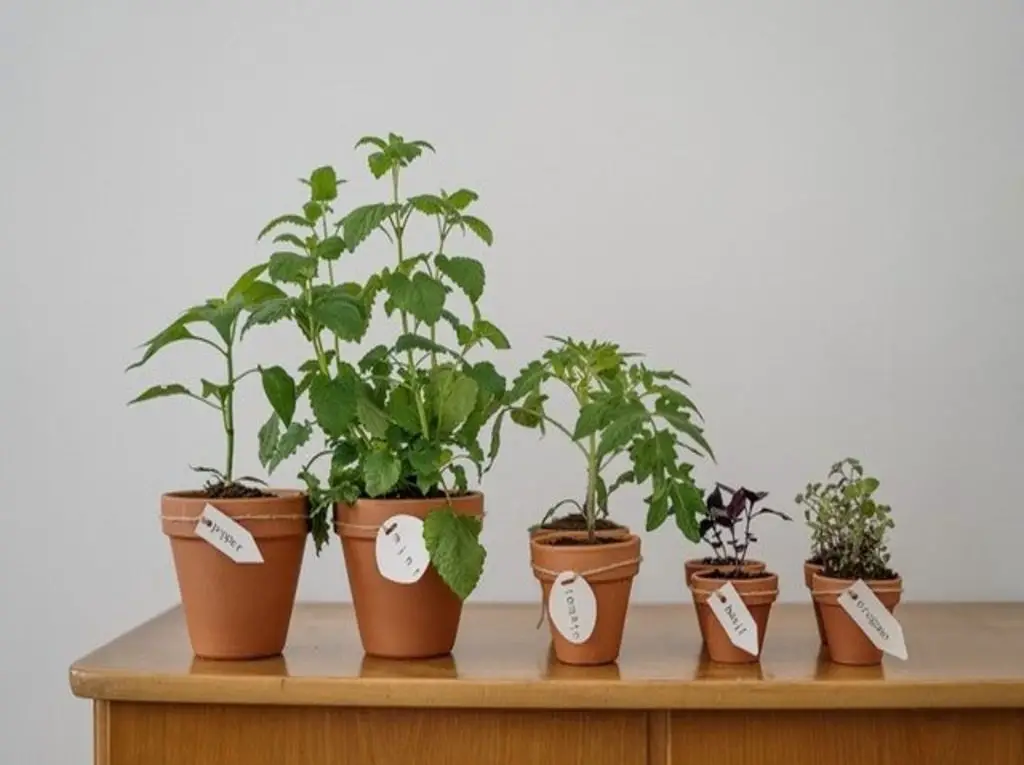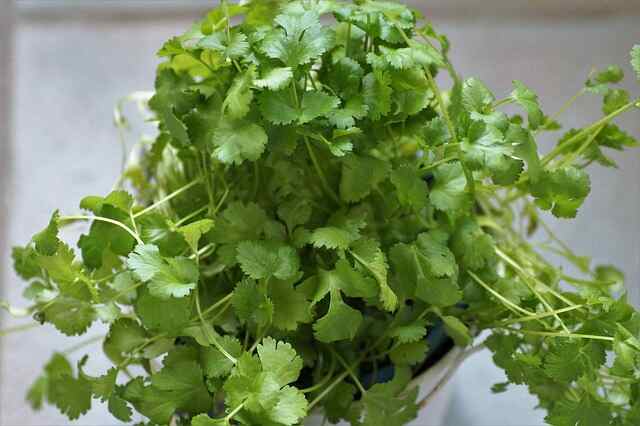How to Grow Coriander at Home from Seeds? (Easy Guide)

Hello there! If you are fascinated by cultivating your own food and especially herbs, then this guide is definitely for you. Learning how to grow coriander at home from seeds can be a very rewarding and economical experience if done right.
We will go through the essential steps needed to successfully grow coriander from seeds, such as the type of soil to use, planting and germination tricks, watering requirements, and when it is best to harvest.
There are so many ways to take advantage of fresh garden-grown produce in terms of flavor and texture, not to mention satisfaction that comes with growing it yourself. So let’s get started!
Table of Contents
How to Grow Coriander at Home from Seeds?
I. Introduction
Brief overview of the benefits of growing coriander at home
Growing coriander at home has numerous benefits. Not only is it economical, but almost anyone can do it with minimal effort. Home-grown coriander is fresher than what you get from the store and its flavor is more pronounced.
It also provides a great source of vitamins A, C, and K, as well as essential minerals such as potassium, magnesium, and iron. Growing your own coriander will give you plenty of fresh leaves to use in recipes, while also enhancing the taste and nutrition of your meals.
Additionally, this herb requires very little maintenance once grown – making it even easier to enjoy its many benefits!
Importance of using seeds to grow coriander
Coriander is a popular herb and spice often used in cooking, so it is great to be able to grow it yourself at home. For the best results and highest yield of coriander, you should use seeds rather than pre-grown plants.
Seeds are more cost-effective since they can be bought in bulk, and they also have higher germination rates, meaning that you will get more plants from your investment.
Moreover, coriander has a longer shelf life when stored as seeds, so you can keep them for future use or even share with friends. Growing your own coriander using seeds therefore makes sense!
Purpose of the blog post
This blog post aims to help home gardeners learn how to grow coriander from seeds. Coriander is an aromatic herb that can be used in a variety of recipes, and it’s easier than you might think to start growing your own at home!
We’ll cover the types of soil and temperature requirements for germinating coriander, as well as provide tips on how to properly care for the plant so that it will thrive and produce flavorful leaves throughout the season.
By the end of this post, home gardeners should be feeling confident about starting their own coriander plants from seed.
II. Choosing the Right Coriander Seeds
Different types of coriander seeds available
When it comes to purchasing coriander seeds, there are several different varieties available. Some of the most commonly found ones include Afghani, Calypso, Calypso Green Leaf, Chinese Parsley, and Caribbean.
Each variety has unique characteristics that make them ideal for certain dishes or recipes. Depending on what you plan to use your coriander for, you may want to explore the different types of coriander seeds available to find the right one for you.
How to choose the best quality seeds for growing at home
When choosing the best quality seeds for growing coriander at home, it’s important to look for those that are certified organic or heirloom. Organic seeds come from plants grown without the use of synthetic pesticides and fertilizers.
Heirloom varieties are open pollinated, meaning they will produce an offspring that is true to its parent variety. Look for seeds that have been stored in ideal conditions to ensure a higher germination rate.
Additionally, you should check their expiration date, as old seeds may not be viable. Finally, if possible, purchase only what you need, since leftover seeds may dry out over time and lose viability quickly.
Tips for storing coriander seeds
When storing coriander seeds, it is important to keep them in a cool, dry place. Store them in an airtight container such as a mason jar or plastic bag and add a few silica gel packets to help absorb any moisture.
Place the container in a dark and dry area that is away from direct sunlight, such as the pantry or cupboard. Make sure to label your container, so you’ll know when they were purchased.
Additionally, periodically check on your coriander seeds to make sure they are still viable by testing one or two of the seeds by placing them in water; if they sink, then they are still good for planting.

III. Preparing the Soil and Planting the Seeds
How to prepare the soil for coriander seeds
Preparing soil for coriander seeds is essential to ensure maximum growth and yield. First, the soil should be loosened up with a rake or hoe to a depth of 10-15 cm.
Second, fertilize the soil by adding compost or aged manure to provide nutrients that will help the plants grow strong. Third, make sure the pH level of your soil is between 6 and 8; if it’s too acidic, add some lime to balance it out.
Finally, water the soil before sowing the seeds so that they can come into contact with moist ground – this will help them germinate sooner. Following these steps will give you healthy coriander plants in no time!
Tips for planting the seeds
Planting coriander from seeds is an easy way to grow this flavorful herb at home. To get started, find a sunny spot in your garden or containers and scatter the seeds onto the surface of moist soil. Make sure the soil is well-drained, as overly wet conditions can lead to root rot.
If you’re planting indoors, use peat pots for easier transplanting. After sowing, cover the seeds with a light layer of soil and water gently. Keep the soil consistently moist but not drenched until the seedlings have emerged – usually within 7–10 days.
Once they have sprouted, it’s time to thin out any overcrowded plants so that there is enough space between them for proper growth. With some care and patience, your coriander should be ready for harvesting in about two months!
How deep to plant the seeds
When planting coriander seeds, you should plant them about 1/4″ deep into the soil. It is best to have a light covering of soil over them and to water regularly afterward. Make sure that your soil is well drained so that the coriander can get plenty of moisture while still being able to drain any excess away.
When preparing the planting spot, amend your soil with compost or other organic material and make sure it is loosened up before planting the seeds. Once planted, maintain moist soil for germination and keep an eye on the seedlings to ensure they don’t dry out.
How far apart to space the seeds
When planting Coriander seeds, it is important to space them out appropriately. Generally, sow the seeds about 2-3 cm apart from each other, in rows that are spaced 30-45 cm apart. This will ensure that the plants have enough room for root growth and there isn’t an overcrowding of seedlings.
Additionally, if you are planting several rows of Coriander, leave a gap of at least 10 cm between each row to give yourself more room for tending to your crop.
When sowing your seeds, remember to keep the soil moist and warm until germination occurs (usually within one week). Enjoy growing this nutritious herb!
How to water and care for the seeds during germination
When growing coriander from seeds, it is important to ensure the soil stays moist during germination. Start by sprinkling the seeds over a pot of well-drained soil and cover them with a thin layer of compost or vermiculite.
Then, water thoroughly with lukewarm water until the top inch of soil is moist. Make sure to keep the soil damp until the seedlings appear, which can take up to two weeks. It’s also important to make sure your pot is in an area that gets plenty of indirect sunlight and avoid letting it dry out.
After your seedlings appear, you can start watering less often but more deeply, so they have time to develop strong roots.

IV. Transplanting and Caring for the Coriander Plant
When and how to transplant the coriander seedlings
Once the coriander seeds have germinated and the seedlings have grown a few inches, it is time to transplant them. The best time to do this is during spring or early summer, when the weather is warm and there is plenty of sunshine.
When planting out seedlings, make sure to place each plant at least one inch apart in order for them to receive adequate sunlight and air circulation.
Dig a small hole in the soil where you will be placing your coriander plants and gently remove each seedling from its container before planting it into the soil with its roots just below the surface level.
Add some compost or well-rotted manure around the area as an additional layer of organic matter, which will help nourish your plants as they grow.
Water regularly, ensuring that all of your plants get enough moisture, but avoid overwatering as this may cause root rot.
Tips for caring for the coriander plant
Coriander is a flavorful, fragrant herb that can add zest to your meals. If you’re looking to grow it at home, here are some tips for caring for the plant:
1) Plant the seeds in a sunny spot with well-drained soil and keep them evenly moist until germination.
2) Thin out any overcrowded seedlings after they appear.
3) Prune off any yellowing or wilting foliage to encourage the plant’s growth.
4) Fertilize once a week with diluted liquid fertilizer, or use organic compost as a natural alternative.
5) Mulch around the base of your plants to protect against weeds and retain moisture levels in the soil.
With these simple steps, you’ll be able to enjoy fresh coriander all year round!
How much sun, water, and fertilizer the plant needs
Coriander is an easy-to-grow herb that can be grown indoors or outdoors. Its delicate leaves are best harvested when young. To grow coriander at home successfully, the plant needs plenty of sunny days, with six to eight hours of direct sunlight daily.
Additionally, keep your soil moist but not waterlogged; regular watering is necessary for healthy growth. The plant also requires fertilization every two weeks during the growing season in order to remain lush and keep producing delicious leaves.
With these simple tips, you can enjoy a bountiful harvest of fresh coriander from your own garden!
How to control pests and diseases
Coriander is a herb that loves the sun and prefers to be planted in well-draining, nutrient-rich soil. However, due to its popularity, it can also attract pests and diseases if not properly cared for. To keep your plants healthy, start by inspecting them regularly for signs of disease or pests. Additionally, you should remove any dead or wilted leaves from the plant as soon as possible.
If necessary, you can apply an organic fungicide or insect repellent to help control both pests and diseases. You may also want to try companion planting with other herbs like basil or dill, which can act as natural pest repellents.
Lastly, be sure to water your coriander plants at least once a week, but only enough where the soil is damp but not soggy. With these tips, you’ll have beautiful and healthy coriander plants growing in no time!

V. Harvesting and Storing Coriander
How to tell when the coriander is ready to harvest
When the coriander is ready to be harvested, it will have a deep green color with fully developed leaves that are about 10 cm long. The stems should be firm and straight, and their texture will be on the woodier side. To ensure that all parts of the herb are sufficiently mature, wait until the plant has at least 4–6 leaves before harvesting.
It’s also important to remember that if you want to save seeds for replanting in future harvests, don’t harvest the entire plant—leave some of it unharvested so that it can go to seed. In addition, don’t pull out the whole stem; try using scissors or pruning shears instead.
How to harvest fresh coriander leaves
Harvesting and storing fresh coriander leaves is a great way to enjoy its unique flavor year-round. It is best to start harvesting the leaves once they have grown to 3–4 inches long. To harvest, simply cut off the stems about 1/2 inch above soil level with scissors or pruning shears.
How to dry and store coriander seeds
When properly stored, harvested coriander can last for several weeks in your refrigerator. To store, rinse off the coriander leaves and pat them dry before placing them into an airtight container or plastic bag. Place in the coldest area of your refrigerator for optimal storage life.
Make sure to remove any wilted or discolored leaves before storing and keep away from moisture as this will cause mold growth. Enjoy your freshly harvested and stored coriander all year round!

Extra Tips
1) Coriander seeds can be sown indoors using a seed starter kit in March or April for planting outdoors after 6 weeks when the temperature reaches 50 degrees Fahrenheit during the day and 40 degrees Fahrenheit at night. You can start them earlier if you live in zones 9 or 10 where winters are warmer.
2) When you sow coriander seeds indoors, you need to sprinkle some seeds on the surface and cover the seeds lightly with 1/4 inch of seed starting mix.
3) Keep them in the dark, and moist at a temperature of 6o degrees Fahrenheit until germination occurs.
4) Seedlings will start to sprout after 10-25 days.
5) Once sprouts appear, you can place them in an area that receives at least 4 hours of sunlight a day such as a windowsill. If you do not have a window that receives enough sunlight, you can start them indoors under artificial light, but they will eventually need access to natural light for proper growth and development.
6) Coriander will need transplanting when it reaches 2-3″ inches tall, but don’t do it too soon. It’s best to wait until the plants have two sets of leaves before you transplant them into bigger 10″ inch pots. To do this, carefully remove them from the seed starter kit cells, being careful not to damage roots too much as you remove them.
7) Planting outside in the garden is a new experience for your seedling plants. It can be hard on them and even potentially kill them, so you need to “harden off” your plant before planting it. What does this mean? Hardening off means getting your plant used to being outdoors by gradually introducing it to its new environment.
8) The first step is putting them outside in a sheltered area for a few hours each day until they are ready for direct sunlight.
9) They will also need some time with high humidity and low wind or rain. Doing this will eliminate the transplant shock when moving the plant into the garden.
VI. Conclusion
This blog post illustrates the simple steps to growing coriander at home from seeds. It explains how to prepare the soil, when and where to sow the seeds, how deep they should be planted, watering schedules and tips on harvesting.
Key takeaways are that planting in full sun and well-drained soil is best for optimal growth; seeds should be sown at least 3 cm deep and watered regularly; thinning out seedlings can help promote healthy development; and harvest leaves as soon as possible for peak flavor.
By following these guidelines, you should have a plenty of coriander to enjoy in no time!
Related Post: 55 Fun Facts About Cilantro (with Photos, ID & Info)









